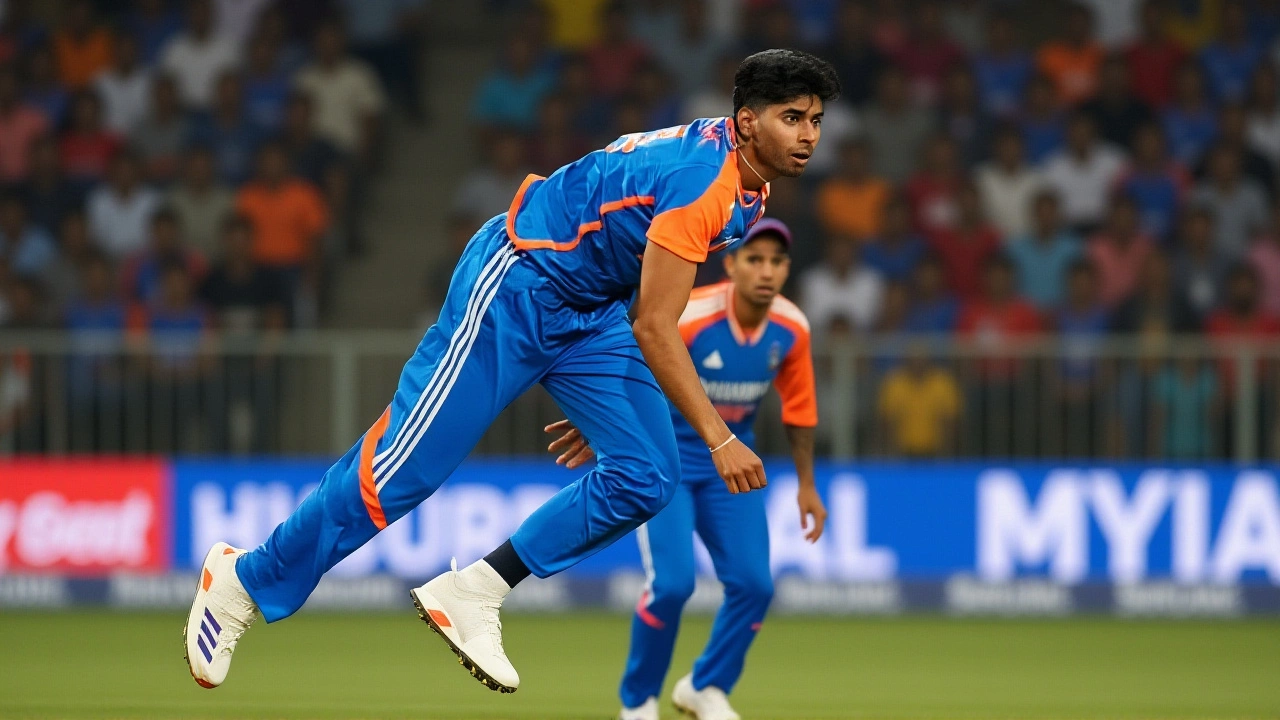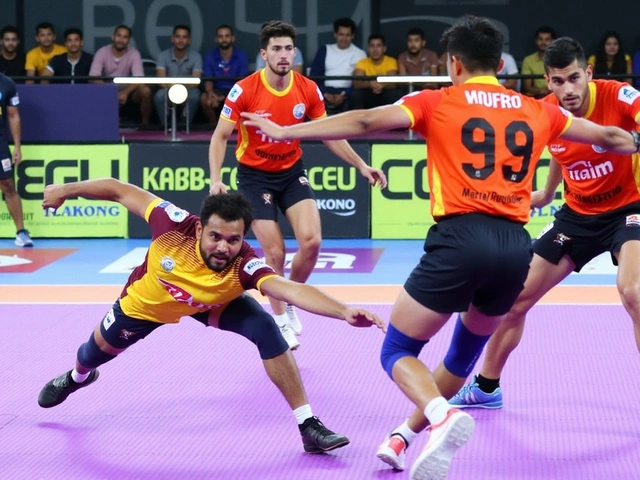Despite missing over six months of cricket and undergoing back surgery, Mayank Prabhu Yadav is set to be retained by Lucknow Super Giants at his full ₹11 crore price tag for IPL 2026—a decision that has stunned analysts and sparked debate across Indian cricket circles. The move, confirmed by multiple sources including News18 on November 18, 2025, comes after Yadav played just two matches in IPL 2025, his season derailed by a recurring back injury that forced him off the field in April and led to surgery in June. The franchise’s leadership—Tom Moody (director of cricket), Justin Langer (head coach), and Bharat Arun (head of talent)—made the call not on recent form, but on raw potential. Here’s the thing: they’re betting on speed, not stats.
Why Retain a Bowler Who Didn’t Bowl?
Yadav, the 23-year-old right-arm pacer from Delhi, burst onto the scene in IPL 2024 with ferocious pace—clocking 156.7 km/h, one of the fastest deliveries ever recorded in the league. He won two Player-of-the-Match awards that season, terrorizing top-order batsmen with his raw velocity. But in 2025, he didn’t just struggle—he vanished. He didn’t bowl a single over in the first half of the season. When he finally returned on April 27 against Mumbai Indians at Wankhede Stadium, he was a shadow of himself. His pace dipped below 145 km/h. His economy rate ballooned to 12.50. He took two wickets in two matches. Yet, LSG’s think tank saw something else: a 23-year-old with a rare physical gift, one that could change the course of a game in three overs."He’s not a bowler you coach into pace," said a senior LSG official, speaking off-record. "You either have it, or you don’t. And he has it. The question isn’t whether he’ll come back—it’s whether we can afford not to wait for him."
The Cost of Patience
The financial stakes are steep. Retaining Yadav means LSG must release several key players to stay within the salary cap. Among them: Ravi Bishnoi, the 25-year-old leg-spinner who was signed for ₹4 crore in 2022 and delivered 13 wickets in his debut season. Also on the chopping block: fast bowler Akash Deep and South African powerhouse David Miller. That’s a significant pivot—from experienced finishers and spin anchors to a single, high-risk fast bowler. The logic? Depth in spin is replaceable. A 150+ km/h pacer who stays fit? That’s lottery-ticket material."We’ve seen what happens when you lose a fast bowler to injury and don’t have a backup," said former India pacer Manoj Prabhakar on a cricket podcast. "You spend the next two seasons scrambling. LSG aren’t just keeping Yadav—they’re keeping the idea that someone can still scare the hell out of Kohli or de Kock with pure speed."
Recovery Timeline: Hope vs. History
Yadav’s rehabilitation is being closely monitored. According to a YouTube analysis by The Chatter Crew, he began light bowling drills in October 2025 and is expected to reach 85% capacity by February 2026. That’s aggressive. Most bowlers returning from back surgery—like Jasprit Bumrah—take 12 to 18 months to regain match fitness. Bumrah, remember, was managed with surgical precision over two full seasons. Yadav’s workload before injury was far heavier—he bowled 16 overs in his first three IPL games in 2024. That’s a red flag for physios. "People who come back from this don’t bounce back quickly," noted the analyst. "And Mayank doesn’t have Bumrah’s body control or workload management."But here’s the twist: LSG’s captain, Rishabh Pant, reportedly pushed hard for the retention. "He said retain because he sees him as a 10-year player," said a source close to the team. "He’s seen what happens when you have a guy who can break a game open in three balls. He doesn’t want to lose that.

What This Means for IPL 2026
If Yadav returns even at 80% pace, he could become the most feared death-over bowler in the league. Imagine him at the death with 148 km/h bouncers, swinging the ball late, and a yorker that cracks the stumps. That’s not just a player—that’s a game-changer. But if he doesn’t? LSG could be left with a ₹11 crore liability and a gaping hole in their pace attack. The gamble is enormous.Meanwhile, the franchise is quietly eyeing veteran fast bowler Mohammed Shami, who’s reportedly available after his release from Sunrisers Hyderabad. If they land him, it’s a safety net. If not, they’re going all-in on a teenager with a broken back and a dream.
Who’s Left? Who’s Coming?
While Yadav stays, LSG’s bowling unit will look drastically different in 2026. Left-arm pacer Mohsin Khan, along with uncapped talents Akash Singh, Prince Yadav, and M. Siddharth, will form the core. The team’s strategy is clear: young, cheap, and fast. No more expensive finishers. No more spin-heavy middle overs. Just pace, pressure, and unpredictability.It’s a bold, almost reckless philosophy. But in a league where one match can turn on a single delivery, LSG is betting that one delivery from Mayank Yadav might be worth more than ten from anyone else.
Frequently Asked Questions
Why is Lucknow Super Giants retaining Mayank Yadav despite his poor IPL 2025 performance?
LSG’s leadership prioritized Yadav’s raw pace and long-term potential over his short-term stats. Though he bowled only two matches in IPL 2025 with an economy rate of 12.50 and failed to consistently hit 150+ km/h, the franchise believes his ability to generate extreme speed—once among the fastest in IPL history—makes him a rare asset. They see him as a game-breaking talent who, if fit, could dominate death overs for years to come.
What injuries has Mayank Yadav suffered, and how serious are they?
Yadav suffered a recurring back injury during IPL 2025, which ruled him out after just two matches. He underwent back surgery in June 2025, following multiple setbacks that made him one of the most injury-prone players in the league. Medical reports suggest his recovery is progressing, with a target of 85% bowling capacity by February 2026. However, back injuries in fast bowlers are notoriously difficult to recover from fully, as seen with Jasprit Bumrah’s prolonged rehabilitation.
Who are the key players Lucknow Super Giants are releasing?
LSG plans to release leg-spinner Ravi Bishnoi, fast bowler Akash Deep, and South African all-rounder David Miller. Bishnoi, who took 13 wickets in his debut IPL season, was a key part of their 2022-2024 strategy. His release signals a shift away from spin-heavy setups toward a pace-dominated attack centered around Yadav’s return.
Is Mayank Yadav likely to play in IPL 2026?
He’s expected to resume full bowling by February 2026, with rehabilitation targets set at 85% capacity by then. While he’s not guaranteed to be match-ready for the March 2026 start, LSG is banking on him being fit for the second half of the tournament. His return will be closely monitored, and his fitness will determine whether he’s selected for the opening matches or brought in as a late replacement.
What does this decision say about LSG’s long-term strategy?
LSG is moving away from expensive, proven performers toward high-risk, high-reward young talent. By releasing Miller and Bishnoi, they’re signaling a shift to a younger, cheaper, and faster squad. Retaining Yadav at full price shows they’re willing to gamble on physical rarity over consistency. If he stays fit, they could have the league’s most intimidating pace attack. If not, they risk a massive financial and tactical misstep.
Could Mohammed Shami be their backup plan?
Yes. Multiple reports suggest LSG is targeting Mohammed Shami, who became available after his release from Sunrisers Hyderabad. Shami, a seasoned international pacer, would offer experience and reliability if Yadav’s recovery stalls. His addition would balance LSG’s gamble—giving them a proven match-winner while waiting for the young phenom to return.



